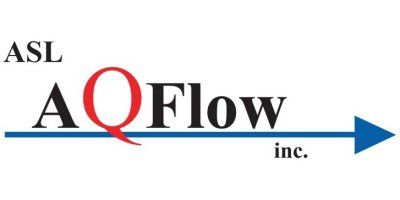

- Home
- Companies
- ASL AQFlow Inc.
- Articles
- Measuring Hydraulic Turbine Discharge ...
Measuring Hydraulic Turbine Discharge With The Acoustic Scintillation Flowmeter- Case Study
Abstract
Hydraulic turbine discharges in low-head hydroelectric plants, and plants with awkward intake geometries can be measured relatively easily with the Acoustic Scintillation Flowmeter (ASFM). The ASFM is non-intrusive, and may be deployed in intake gate slots in a straightforward manner, lending itself to multiple measurements in the same plant. Examples of measurements in two generating stations are presented. Tow-tank tests have shown the current speed measured by the ASFM to be accurate to within ±0.3% over a range of towing speeds from 0.5 to 5.0 m/sec. A recent comparison of discharge measured by an ASFM and an acoustic time-of-travel meter, made at B.C. Hydro`s Revelstoke Dam this spring was invalid due to installation problems. The factors affecting the accuracy of ASFM discharge measurements are discussed, and plans for further comparison testing are outlined.
Introduction
The Acoustic Scintillation Flowmeter (ASFM) measures the flow in a turbulent medium, such as water, by transmitting sound signals across the channel or passage in which the flow is to be measured. The turbulence in the flow causes random fluctuations (referred to as scintillations) in the amplitude and phase of the sound as it travels through the water. The speed with which the water is moving is measured by observing the transverse drift of scintillations across two closely-spaced propagation paths. The method has been used for atmospheric and ionospheric winds (Ishimaru, 1978; Lawrence, Ochs & Clifford, 1972; Wang, Ochs & Lawrence, 1981) and for measuring currents and turbulence in ocean channels (Clifford & Farmer, 1983; Farmer & Clifford, 1986; Farmer, Clifford & Verrall, 1987; Lemon & Farmer, 1990; Lemon, 1993); its derivation is well-established.
Figure 1 shows a schematic representation of an ASFM in use. Two transmitters are placed at one side of the channel, two receivers at the other. The signal amplitude at the receivers varies randomly in time as the distribution of turbulence along the propagation paths changes with time and the flow of the mean current. If the paths are sufficiently closely-spaced, the turbulence may be regarded as being embedded in the mean flow, and then the pattern of scintillations at the downstream receiver will be nearly identical to that at the upstream receiver, except for a time delay, ?t. The delay is found by computing the time-lagged cross-correlation between the signal amplitudes at the two receivers over some suitable length of record. ?t is then the lag at which the peak of the cross-correlation function is found, and the mean flow speed perpendicular to the acoustic beams is ?x/?t, where ?x is the separation between the beams.
The ASFM measures the lateral (i.e. along-path) average of the component of the flow perpendicular to the acoustic path. It is therefore well-suited for collecting data for discharge measurements, since the product of the path length with the lateral average of the normal component of flow gives the element of discharge at the depth of the path. Sampling at several levels in the vertical and integrating then gives the discharge.
